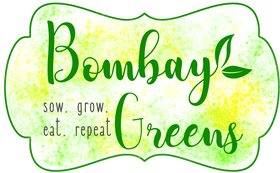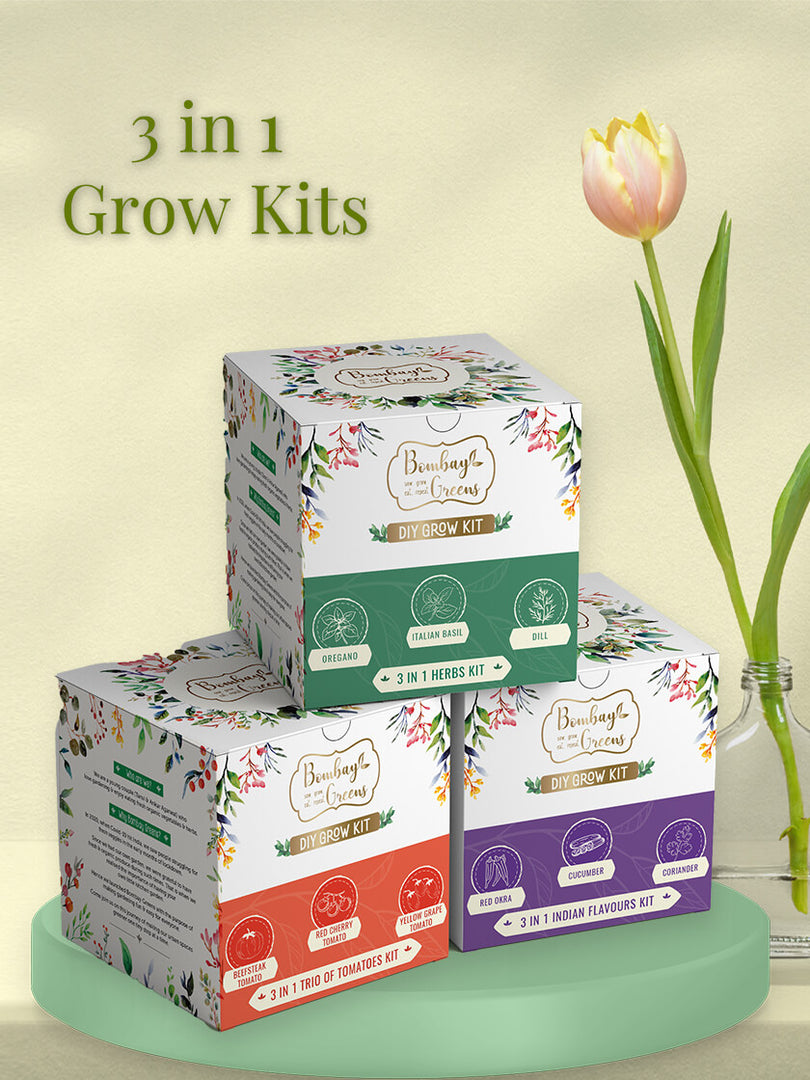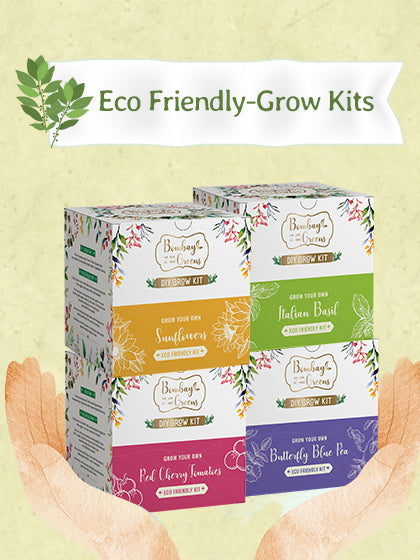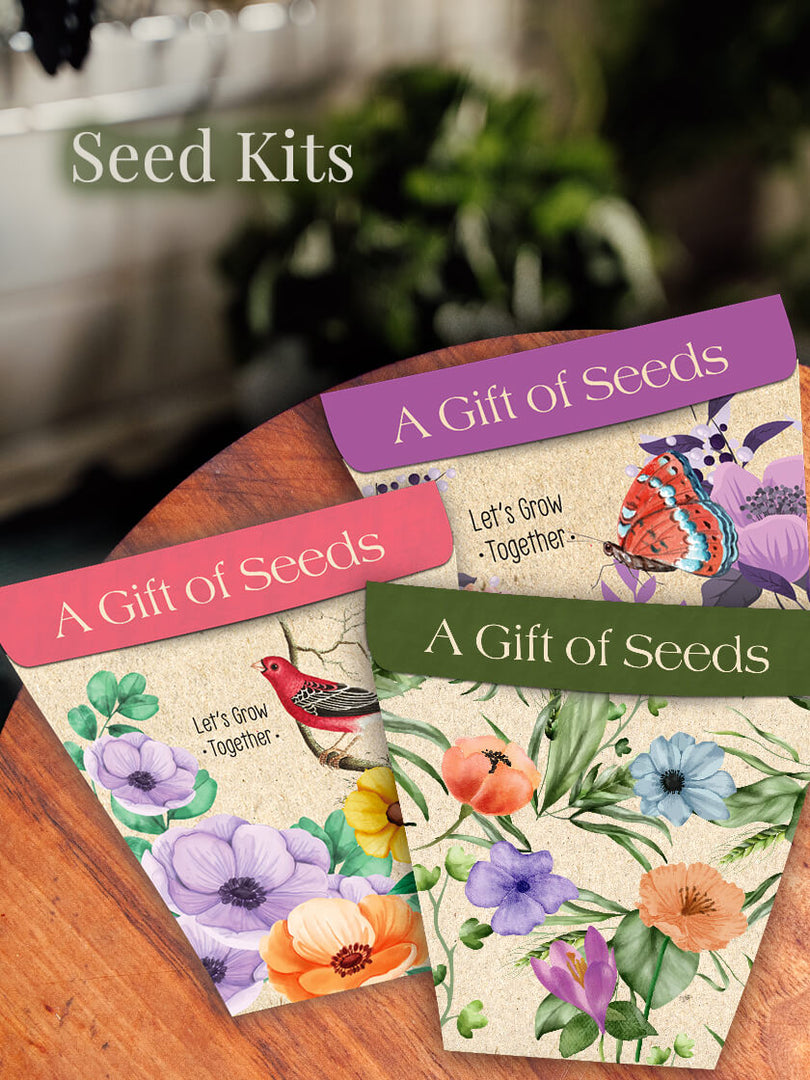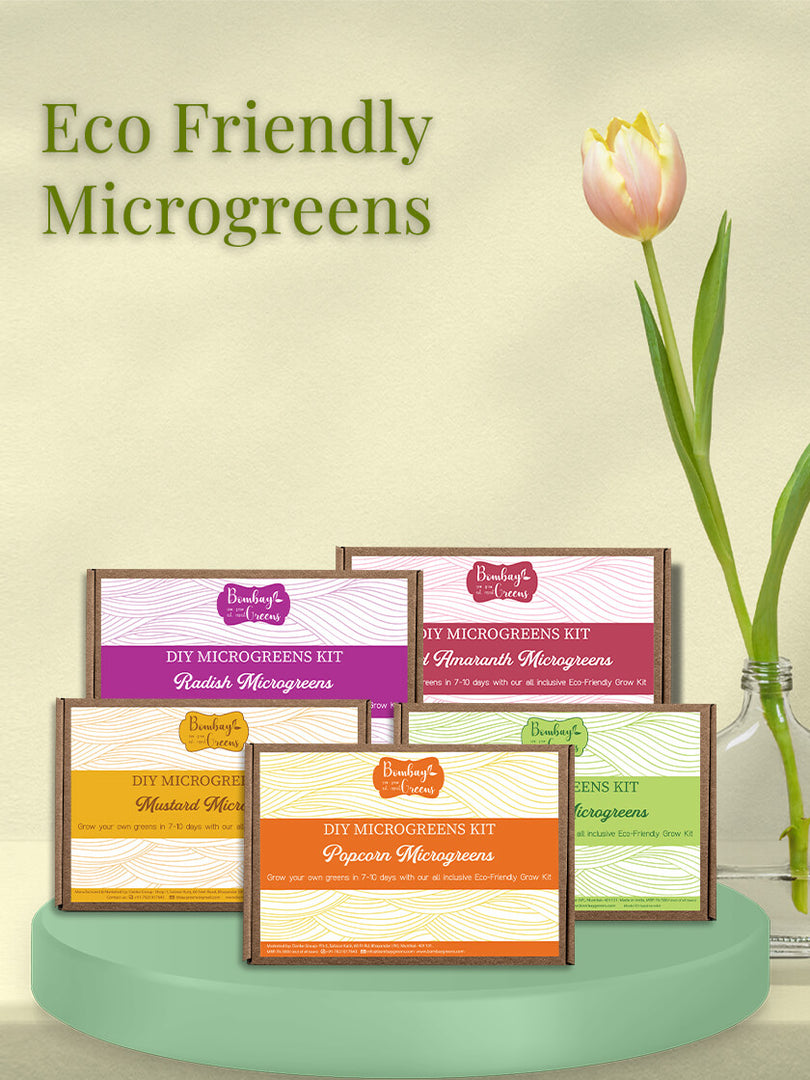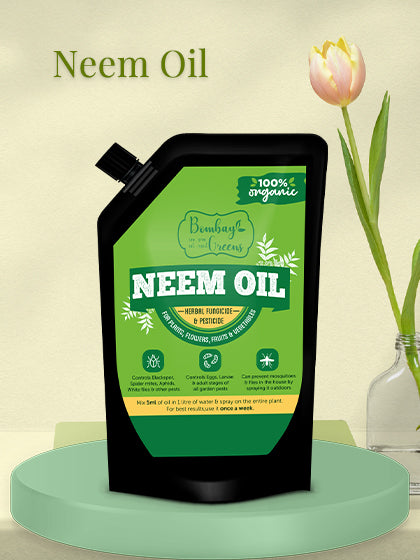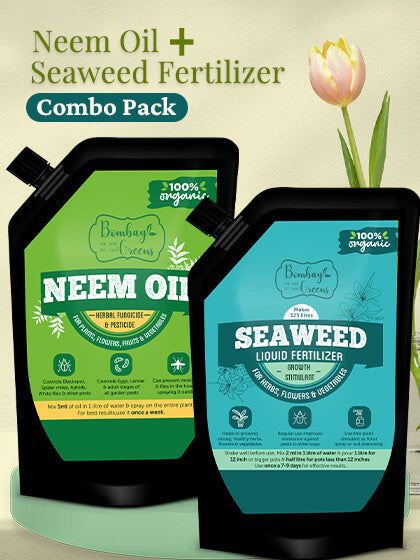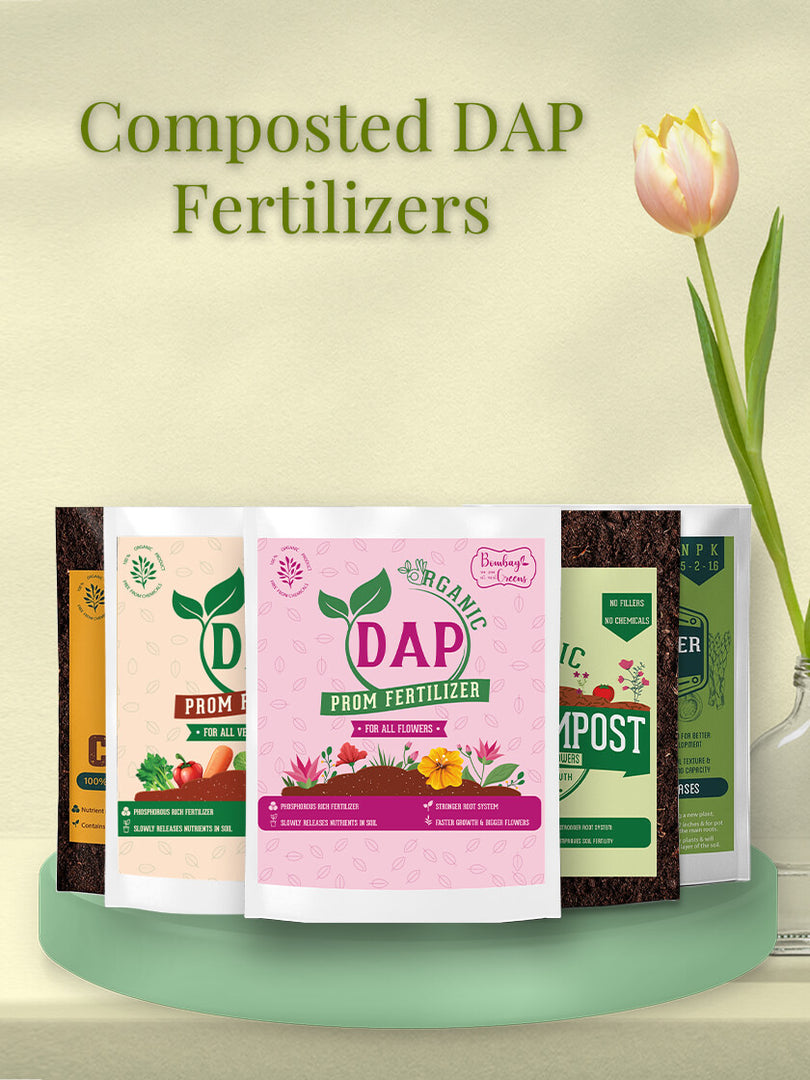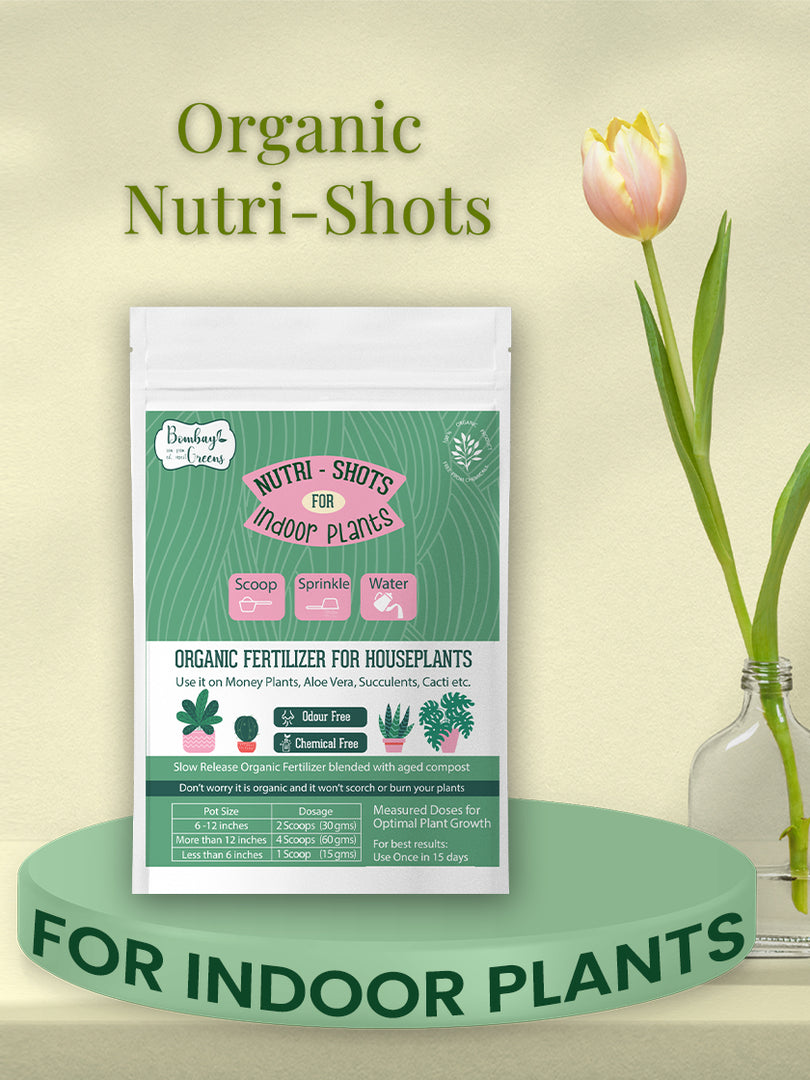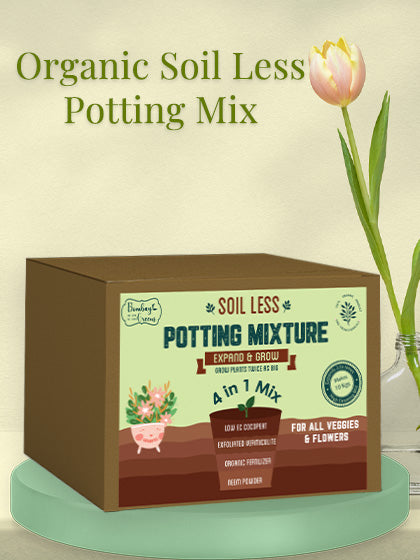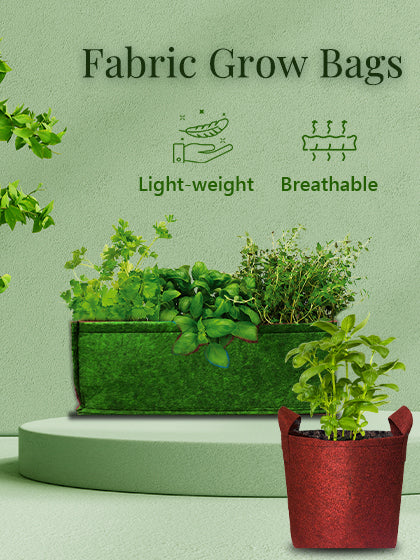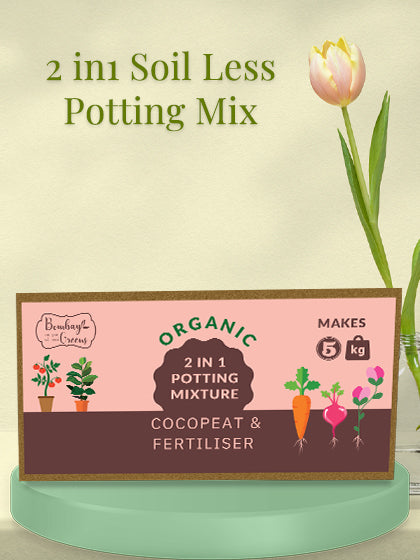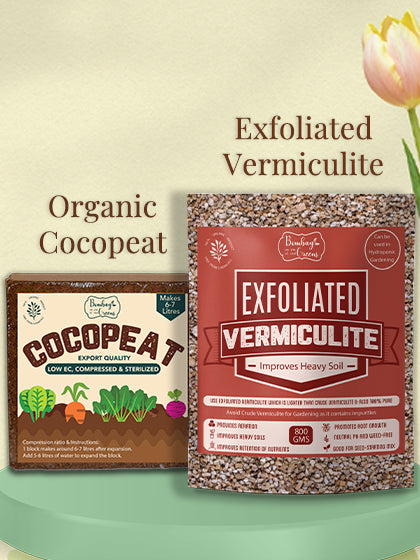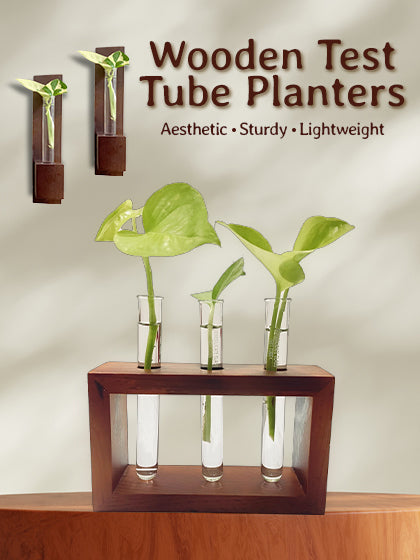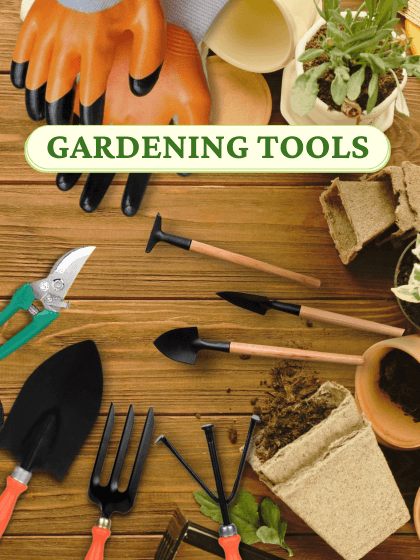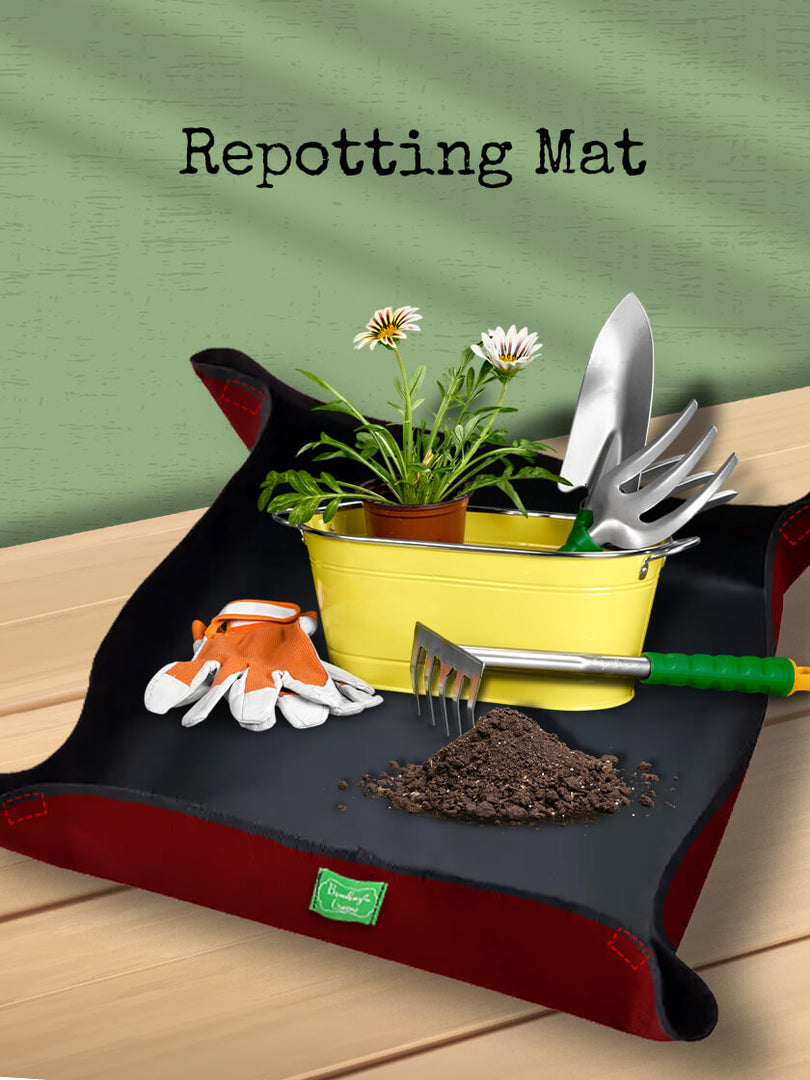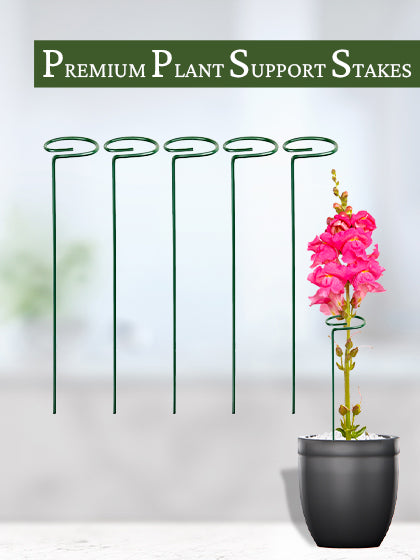
How would you feel if you brought home a beautiful new plant and placed it by the sunniest window, but weeks later, its leaves start to droop or it dries out too quickly? This is every gardener's nightmare!
In this blog, we will touch upon the fact that the secret to thriving potted plants isn't just sunlight, water and other gardeners tools and equipment but the story begins with the right soil.
The right choice of soil can provide a nourishing home for roots, perfect balance of air, moisture, nutrients, and create a little ecosystem where your plants get to flourish. No matter if you are growing fragrant herbs or vibrant flowers, the right soil is undoubtedly the first step towards a flourishing garden.
Factors Influencing Indoor Plant Soil Mixture Selection
Whether you are a newbie or an experienced plant parent, choosing the best potting mix for indoor plants is a struggle for all. But don’t worry, we are here to help you out. Here are a few factors that make soil for pots good. If your soil mixture for plants ticks all the boxes, it is good to go.
-
Aeration
Your plant needs loose and airy soil in order to push new roots. A dense soil will hinder the growth of the plant. Good potting mixes should have materials like perlite, vermiculite, or river sand that promote aeration. Adequate aeration ensures that oxygen can reach the roots, promoting healthy growth.
-
Moisture Retention:
Moisture retention is just as important as aeration. Now it is essential to understand that soil shouldn't become waterlogged, but it should be able to hold some moisture to promote plant health and growth. Look for indoor plant soil mix with components like peat moss, coconut coir, or composted bark that can hold onto moisture without becoming waterlogged.
-
Nutrient Content
Your soil for plants should have nutrients for the plants to grow. Choose a potting mix with added organic fertilizers like manure, compost, or vermicompost.
-
Density and Texture
The texture of the potting mix for indoor plants affects root growth. It should be loose enough to allow roots to penetrate easily but firm enough to provide support. Avoid mixes that are too dense or compacted. When buying, feel the mix with your hands. You should be able to dig your fingers in the mix easily. It should also feel slightly moist and warm.
-
Disease and Pest Resistance
The texture of the potting mix for indoor plants affects root growth. It should be loose enough to allow roots to penetrate easily but firm enough to provide support. Avoid mixes that are too dense or compacted. When buying, feel the mix with your hands. You should be able to dig your fingers in the mix easily. It should also feel slightly moist and warm.
-
Plant Type and Requirements
Each plant has its specific soil preferences based on their moisture, air, and nutrient needs. Knowing what your indoor plants require will help you pick the right soil for pots.
-
Watering Frequency and Retention
A well-balanced soil mix will ensure that the water is retained long enough for the roots to absorb it without causing root rot. Selecting a potting mix for indoor plants that strikes the right balance of water retention and drainage can keep your plants healthy and hydrated.
-
Light and Humidity Conditions
Indoor plants require diverse environments to thrive. Some plants do well in bright light, while others need low light corners. Humidity levels also vary for different plants. The right choice of potting soil mix should align with your plant's light and humidity requirements to help them thrive.
-
pH Level
pH level of soil can have a direct impact on how well the plants absorb nutrients. Indoor plant soil should be slightly acidic to neutral (6.0 to 7.0) to facilitate optimum nutrient uptake. If the soil is too acidic or alkaline, it can hinder plant growth.
-
Container Gardening
When you are growing plants in pots, the space is limited. The right soil mixture for potted plants which is lightweight and quick draining can ensure that roots expand freely without any hindrance. This allows air to reach the roots and supports healthier plant growth.
These are the basic requirements of any soil mix for indoor plants. If your soil mix has all of these components, it would be perfect for your plants.
Inorganic Vs Organic Potting Soil - Which is the Best Potting Soil for Your Houseplants?
Inorganic potting mix refers to soil mix that is not biodegradable or does not have any natural elements. Expanded Clay Pellets (LECA) and perlite are inorganic potting mixes. They are loose and airy but lack any nutrients and water retention.
On the other hand, organic potting soils fulfil all the required criteria for a healthy potting mix. Coco peat is good for aeration, while peat moss is excellent for moisture retention. Manure and compost are great sources of nutrients and neem powder protects from diseases. The organic mix is also sustainable and better for the environment.
Which is the best potting soil for your plants? Well, organic potting mix has everything your plant needs and it is also good for the environment. However, depending on the needs of your plant, a mixture of inorganic and organic potting mix can also be used.
Benefits of Using the Right Soil for Indoor Plants
Soil for plants is the medium where your plant is growing. Thus, the quality of soil has a huge impact on how the plant will grow and thrive. Here are some of the benefits of using a good soil mix for indoor plants:
-
Protects from diseases:
A good soil mixture for plants can reduce the risk of root rot, fungal infections and other diseases in your plants. The best soil for planting should include neem powder to protect plants from diseases.
-
Roots get room to grow:
Soil mix for indoor plants includes elements like perlite or tree bark that keep the soil aerated and loose. This allows the roots to push through the loose soil and grow.
-
Better nutrient absorption:
If the plant's roots are more widespread throughout the pot, it will be able to absorb more nutrients and water.
-
Less risk of water logging:
When the soil mixture for plants is more aerated, it does not hold water. A well-draining soil is very healthy for plants. It reduces the risk of root rot and other root diseases. This is why you should choose the best potting mix for plants that have sand, perlite, and other coarse elements.
-
Faster growth:
The best soil for plant growth includes organic matter like cocopeat, coir, and vermicompost that slowly release nutrients in the soil for the plant to absorb. This is why plants that are planted in potting mixes have faster growth rates.
Also Read - Difference between Fertilizers and Manure
What is Potting Soil?
When plants are planted directly in the ground, they get their nutrition directly from the soil underneath them. There are no issues of water drainage or water retention, as water will keep flowing down into the earth. The roots get more space to grow and are aerated naturally.
However, plants potted in containers or pots need a special soil mix for better growth due to space constraints and drainage issues in pots.

Potting soil for plants or Potting Mixture is a soil mix that is used for growing plants in pots in your garden at home or on the terrace.
Typically, this soil should be a mix of water draining components, moisture-retaining components and nutrients like potassium, magnesium, calcium, phosphorus, etc.
When we talk about soil mix, it generally comprises coco-peat, perlite, compost, and soil like red soil or garden soil. These elements make the potting soil compatible with the plant’s needs allowing them to grow well.
Typically, Red soil is one of the best and most economical soil types for plants to grow but this has a negative impact when used in pots. Red soil tends to retain a lot of water and gets compact. This affects the growth of roots causing them to rot due to the high level of retained water in the soil and as it dries it clogs them due to compactness. This is why for potting plants in containers, a potting mix is used.
How Climate and Environment Affect Your Soil Mixture for Plants
The climatic conditions and environment have a huge impact on the growth of your plants. Most plants require a warm climate, humidity, and well-draining soil. But you might need to adjust the soil according to the climate in your location.
-
Tropical Climate:
The main characteristics of a tropical climate are high humidity and hot temperatures throughout the year. If you live in the southern parts of India, you probably experience a tropical climate. Since the weather is always hot and humid, there is a higher chance of fungal infection in your plant.
You should prefer potting soil with lots of neem powder and cocopeat. Neem powder is helpful in fighting infections and diseases, and cocopeat retains moisture without waterlogging.
-
Temperate Climates:
The main characteristics of a tropical climate are high humidity and hot temperatures throughout the year. If you live in the southern parts of India, you probably experience a tropical climate. Since the weather is always hot and humid, there is a higher chance of fungal infection in your plant.
You should go for potting mixes with organic matter like tree bark, manure, and compost so that the plants get enough nutrients throughout the year to adapt to the changing weather. In this climate, you should also include sand in your potting mix to make the soil well-draining and aerated.
-
Arid Climate:
An arid climate is marked by dryness, heat and very low humidity. Very few plants naturally grow in this condition, so you need to provide good care to your plants. Water your plants more frequently, and keep them indoors in the summer months.
Your potting mix should have higher proportions of cocopeat to ensure the plant’s roots get enough moisture.
What do Plants need for Better Growth?
Plants need a well-aerated, well-drained and balanced soil that is capable of supplying the required nutrients for the growth of plants in containers.
The health and growth of the plants are directly affected by the quality of the soil used for growing them. When plants grow in gardens or land, they get their nutrition from the natural environment and habitat they are growing in. But when we grow plants in pots the nutrition supply depends on the soil mix we use. Therefore, we must choose the best potting soil and organic liquid fertiliser for our healthy plants.
Types of Soil for Different Plant Types
We know that we need the best potting soil for growing plants in containers and pots but this is not it. Different plants have different soil requirements and thus, we need different proportions of the potting mix components for different types of plants. For example, if you grow succulents or cacti in a regular potting mix, they are less likely to survive because they need super-aerated soil that does not hold water. Similarly, fruits and vegetables have different soil requirements. Let’s understand the potting soil type based on the plants.
1)Soil for Potted Vegetables, Flowers fruits

Vegetables, fruits and flowers are heavy feeders. They require a good supply of nutrition, water and air. Hence the potting soil for them should be well-drained, loose and should contain organic food for the plants. When you are looking for a best organic potting soil for vegetables, fruits or flowers, look for these components in the soil mix:
1).Cocopeat or Coconut fiber for improved water retention, and aeration and decrease the risk of soil fungus and root diseases.
2). Vermiculiteor perlite for drainage
3). Organic compost or fertilizer for the supply of nutrition
These three are the essential components of the potting mix for growing vegetables, fruits and flowers. You can also mix a small amount of Neem Cake powder as it is a natural fungicide and pesticide to avoid any fungal disease in the plants.
You can check out our premium 4 in 1 soil less potting mix which contains cocopeat, vermiculite, neem cake and organic fertilizer. We pack them separately so that you get the purest mix for your plants.
2)Soil for Succulents and Cacti (like Aloe Vera, Howarthia, etc)

Succulents and Cacti have different soil requirements and consist of a blend of other materials. Potting soil for succulents should have three components:
1). Coco peat or coconut coir
2). Perlite for better drainage and avoiding compaction.
4). You can also use river sand instead of perlite which is inexpensive and easy to source.
5). Very little organic compost or organic fertilizer
Succulents and cacti like their soil to be dry and which is why cactus soil is prepared differently where the water drains out immediately. Cactus mix also does not requires Neem cake powder as there is no soil which is the major carrier of fungus and pests.
It is also to be noted that you only water your succulents and cacti when the soil is completely dry otherwise you might kill them due to over watering.
3) Soil for Indoor plants

Indoor plants are mostly ornamental plants and demand less when it comes to nutrition. Since they will be constantly inside the house, opt for the best potting mix for indoor plants, which consists of the following components:
1). Cocopeat
2). Vermiculite
3). A small amount of compost or fertilizer
Indoor plants require attention when it comes to potting them in containers or pots. Unlike other plants, their nutrition requirement is completely dependent on the organic fertiliser in the soil mix and its health depends on the aeration and moisture retention in the soil mix. However, they like well-drained soil and are prone to root rot. Ensure that you use the best organic potting soil mix for your indoor plants.
Factors to Consider When Selecting the Best Soil for Planting
There are certain things that you should keep in mind when you are trying to select the best potting mix for your indoor plants. The best soil for potted plants should contain a blend of coconut coir fiber, vermiculite, perlite, organic fertiliser, sand, compost, and peat moss and is rich in basic nutrients required by the plants.
The best soil for potted plants will contain a blend of coconut coir fiber, vermiculite, perlite, organic fertilizer, sand, compost, and peat moss and is rich in basic nutrients required by the plants. It should be well aerated and should be able to retain moisture and nutrition well.
Any potting mix which does not contain red soil is known as SOIL LESS POTTING MIXTURE. What makes soil-less mix better for potted plants is the fact that these are free from disease, pests and other contaminants. It is well aerated, retains moisture and nutrition as well.
The best part about the soil-less potting mix is that it is very light weighted which makes it very suitable for home gardening. Soil-less mixture for plants, in fact, helps the plant grow 2X compared to the plants grown in red soil or other soil mixture for house plants. It saves you from the pain of ploughing the soil to keep it aerated as it ensures 90% more air space than soil.
How to Identify the Right Soil for Your Specific Plants
When you are buying best potting mix from the market run your hands on the packet to understand the following:
1). The soil should not feel tightly packed and should feel soft
2). It should not feel too damp or too dry
3). Look for ingredients- it should contain vermiculite, peat moss, perlite, etc. These make the soil aerated and ensure moisture retention and no water clogging.
4). It should contain organic fertilizer like compost, manure, etc.
How to Identify the Right Soil for Your Specific Plants
Now that you have learned how to prepare soil for planting, here’s how you can identify the best soil for plants:
-
Know Your Plants
Every plant has specific soil requirements. Learn which soil type suits your plants best—whether they need good water drainage, alkaline soil, or a sandy texture.
-
Check Your Soil
Try running a soil test to check for any nutrient shortages or imbalances. You can do simple DIY tests (drainage test, pH test, jar test etc.) or seek advice from a local expert.
-
Enhance Your Soil
Once you've evaluated your soil and understood your plants' needs, you can prepare the right soil mix for plants. To that end, you can add in compost, adjust the pH, or invest in a good drainage system to create an ideal growing environment.
-
Consider Container Gardening
If your soil mixture for plants doesn't suit certain plants, try container gardening. With pots and the best soil for plants from Bombay Greens, you can have complete control over their growing conditions.
-
Sustainability
Use natural compost from Bombay Greens and skip chemicals to keep your garden green. Sustainable methods of gardening do not just bode well for the health of the plants but also uphold the well-being of the home dwellers and the environment.
Conclusionary Thought
Gardening is a very therapeutic experience and when done correctly, it yields excellent results and satisfaction. We hope that this article helps you to understand more about gardening and how you can ensure to have the best soil for your potted plants. By reading this blog completely, you may have an idea about which is the best soil for plants. Visit Bombay Greens online garden store to get your hands on the best organic potting soil for your potted plants!
FAQs
1. Is red soil good for plants?
Red soil is known for its fertility and good drainage which makes it good soil for plants. This soil type is particularly beneficial for crops like sugarcane and bananas which need a lot of nutrients. But it is not the best potting soil for potted plants.
2. How do you prepare soil for planting?
You can prepare the best indoor potting mix for plants by mixing sand, compost, organic fertiliser, vermiculite, and coconut coir fibre
3. What soil to use for plants?
For plant growth, loamy soil is ideal to use which has a mixture of clay, silt and sand. For your indoor plants, check out the best indoor potting mix from Bombay Greens.
4. What is the difference between potting mix and potting soil?
Potting soil contains a mixture of various components like coco peat, perlite, and manure, along with garden soil. On the other hand, the potting mix can be soil-less and totally made of coconut coir, coco peat, vermiculite, etc. Potting soil is better for tropical plants and potting mix is better for succulents and cactus.
5. How can I make my own potting mix at home?
Take equal parts of garden soil, river sand, organic compost or manure, and coco peat. Add a teaspoon of turmeric powder and cinnamon powder to prevent fungal infections. This potting mix can be used for your indoor plants. For outdoor plants, increase the ratio of coco peat as it helps in water retention.
6. What are the key ingredients of a potting mix for indoor plants?
The best potting soil should include coconut coir or perlite for aeration, coco peat for moisture retention, manure or compost for nutrition, sand, organic barks, or vermiculite for texture, and neem powder for disease resistance.
7. What should I look for on the label when buying potting soil?
Look for chemical-free, organic potting soil for your plants. The potting mix should include organic fertilisers like vermiculite or compost, neem powder to keep the plant disease-free, and sand or orchid bark for aeration.
8. How often should I change the potting mix for my indoor plants?
If your potting mix is healthy, you do not need to change it often. You can simply add compost and manure to it to increase its nutrient content. Re-pot your plant once a year and give it a new potting soil.
9. How can you identify pests or diseases in potting soil?
If your plant has yellowing leaves or spots on the underside of the leaves, there is probably some infection in the roots. You should regularly til the soil to ensure that your potting soil does not retain water.
10. What kind of soil is best for growing plants?
If your plant has yellowing leaves or spots on the underside of the leaves, there is probably some infection in the roots. You should regularly til the soil to ensure that your potting soil does not retain water.

Tanvi Agarwal - Co-founder
Driven by a deep-seated love for nature and a keen entrepreneurial spirit, she co-founded Bombay Greens, transforming urban spaces into thriving green havens. Recognizing the need for accessible and sustainable gardening solutions in the bustling city, she poured her passion into building a brand that empowers individuals to cultivate their own green spaces, regardless of their location or experience. Her vision extends beyond simply selling gardening items; it's about fostering a community connected to nature, one balcony, rooftop, and windowsill at a time.
